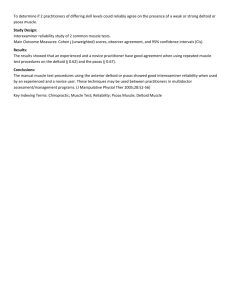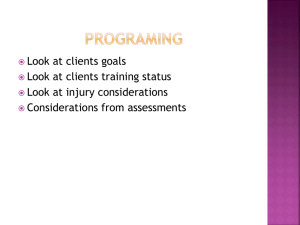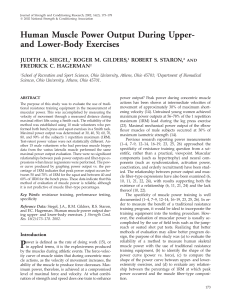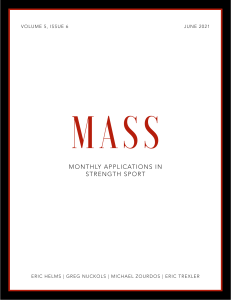Analysis of Common Lifts
advertisement
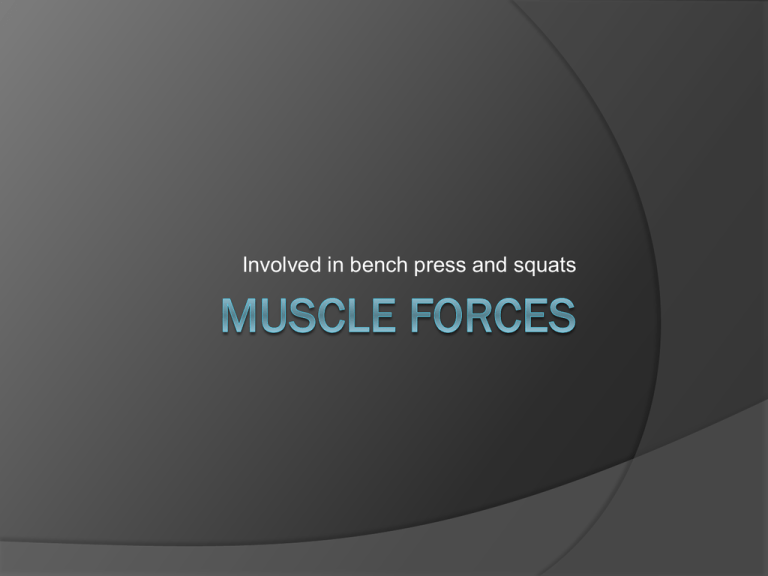
Involved in bench press and squats Muscle Forces The force generated by a muscle action Depends on: number and type of motor units activated the size of the muscle the initial length of the muscle when activated the angle of the joint and the muscle's speed of action Muscle Activity differences Bench Press Free weight vs. Machine Press Squats Normal squat vs. Unbalanced squat Bench Press Most commonly performed exercise, however commonly performed incorrectly. Major Muscles Used Pectoralis Major, Anterior Deltoid, Medial Deltoid, Triceps, Biceps (somewhat). Variations Close grip Wide Grip Machine Press Bench Press Study Comparison of muscle activity between free weight and machine bench press. Calculated IEMG values during the ascent and descent phases. Electromyography reveals periods of electrical activity in a muscle. EMG signal can be used to calculate the IEMG pattern. Bench Press study (cont.) Methods 5 male strength trainers- with previous experience on both free weight and machine bench press. Data collected in two phases ○ Phase 1- 1RM was determined for each subject ○ Phase 2- Data was collected during bench press performance of 80% and 60% of the 1RM Surface electromyography monitored activity in pectoralis major, anterior deltoid, medial deltoid, triceps, and biceps. Subjects performed 20 trials, 10 free weight, 10 machine (Universal machine press). 5 trials at 80% and 5 trials at 60%. 2 min rest between sets. ○ Used tape recorded command of 3.0 sec during descent, and 2.9 sec during ascent phases. ○ 5 lift mean for each subject was calculated then used to find group 5 lift mean. Results Results (cont.) Results (cont.) Results support the hypothesis that greater muscle activity is present during free weights vs. machine. Difference most evident in the 60% 1RM. Greatest for the deltoid muscles. IEMG was for anterior and medial deltoids was 50 and 33% higher during free weight. There are individual differences in muscle activity patterns between the two modes. Possibly having to do with joint and muscle mechanics. Squats Considered one of the best exercises for increasing size and strength of legs. Used in training programs for many sports, often performed incorrectly. Muscles used: Quadriceps Hamstrings Glutes Erector muscles of the back Gastrocnemius Squat Study Isometric squat force output and muscle activity in stable and unstable conditions. Subjects stood either on force plate, or inflatable balls on top of the force plate. Recorded electromyography Vastus lateralis Vastus medialis Biceps femoris Medial gastrocnemius Squat Study (cont.) Methods Nine college students 1 testing session ○ 5 min warm-up ○ 4 trials for each condition (25 min rest between conditions) ○ 3 min rest between sets Squat Study (cont.) Isometric squat ○ Force platform (BP6001200, AMTI, Watertown, MA) ○ Fixed bar position at a 100 deg knee angle ○ Maximal isometric contraction for 3 sec. ○ Stable performed standing on plate ○ Unstable performed standing on inflatable balance disks (90 cm) ○ Surface electrodes placed on muscles Results Results (cont.) Peak force and RFD were significantly higher in stable vs. unstable Average IEMG values for VL and VM were significantly higher in stable vs. unstable No significant differences were found in muscle activity for the BF or G. Force output of unstable condition was 54.4% of stable condition. If stable condition is taken at 100% of maximal strength, the unstable condition would not meet the intensity requirement of 80% for strength gains No discernable benefit from performing exercises in unstable vs. stable conditions.

